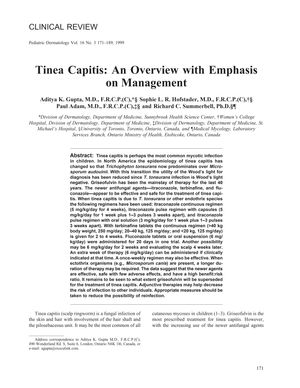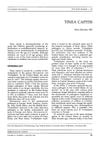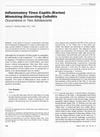Tinea Capitis: An Overview with Emphasis on Management
May 1999
in “
Pediatric Dermatology
”

TLDR New antifungal treatments for a children's scalp infection are effective and safe, but it's not decided if they will become the preferred option over the old treatment.
In the 1999 review, the authors discussed the management of tinea capitis, a fungal infection prevalent in children. They noted a shift in the predominant cause of the infection in North America from Microsporum audouinii to Trichophyton tonsurans, which does not fluoresce under Wood's light, reducing the utility of this diagnostic tool. The standard treatment with griseofulvin, used for over 40 years, was compared to newer antifungal agents like itraconazole, terbinafine, and fluconazole. These newer treatments were found to be effective with few adverse effects, suggesting a high benefit-to-risk ratio, but it was unclear if they would replace griseofulvin as the treatment of choice. The review mentioned various dosing regimens for these agents, including continuous and pulse therapies. Griseofulvin had mycologic cure rates of 96% to 100% in studies with 26 to 49 patients, while itraconazole showed a 100% mycologic cure rate in a study with 120 patients. Terbinafine was also effective, with cure rates varying by treatment duration. The document included a study with 54 subjects, noting an 81% mycologic cure rate with up to 3 pulses of itraconazole and 94.6% with up to 5 pulses, while terbinafine cure rates were 73.6% for a 1-week group, 80.4% for a 2-week group, and 85.9% for a 4-week group. Adverse effects were minimal, recorded in 3.5% of children for itraconazole and 3% for terbinafine. The review emphasized that treatment regimens may evolve with new clinical trial data.

